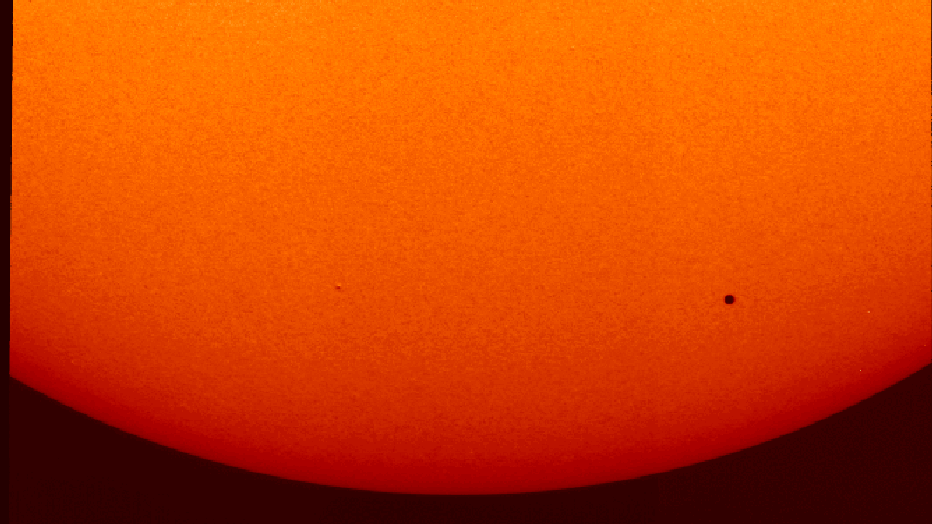Stunning video shows Mercury passing by the sun

Watch Mercury fly by the sun
An orbiter captured stunning imagery of the planet Mercury appearing to pass close by the sun. (European Space Agency via FOX Weather)
A satellite launched in 2020 to take observations and study the solar system’s 4.6-billion-year-old sun had a front-row seat as the planet Mercury moved around the giant star, and the entire episode was captured on imagery.
The European Space Agency recently released videos and other observations from the January 3 transit, where Mercury appeared as a black circle across the face of the sun.
While the encounter looked close, it was anything but – NASA says the first planet in our solar system averages about 36 million miles away from the giant star.
A perception that is not lost in the stunning imagery is the difference in size between the two celestial bodies. Mercury is the smallest planet in the solar system, and the space agency estimates it would take more than 21 million versions of the planet to fit inside the sun.

Mercury captured on imagery flying close by the sun. (European Space Agency)
WATCH OUT FOR THESE ASTRONOMICAL EVENTS IN 2023
"It’s not just looking at Mercury passing in front of the Sun, but passing in front of the different layers of the atmosphere," Miho Janvier, a physicist at the Institut d’Astrophysique Spatiale in France, said in a statement.
The ESA said planetary transits are useful to astronomers because it allows them time to more accurately calculate a feature’s orbit and size as well as recalibrate tools on the orbiter.
The Solar Orbiter is an international cooperative mission between the ESA and NASA, and it has been busy examining the sun’s control on the solar system.

Mercury captured on imagery flying close by the sun. (European Space Agency )
NASA said the satellite completes an orbit of the sun about every 168 days and has made numerous historical firsts, including taking images of the sun’s north and south poles.
The U.S. space agency said the orbiter stays at least 26 million miles away from the sun and can withstand temperatures up to 970 degrees due in part to a large heat shield that protects most of the equipment.
ANTARCTICA’S ‘DOOMSDAY GLACIER’ IS MELTING AWAY DIFFERENTLY THAN SCIENTISTS FIRST THOUGHT
"If Solar Orbiter’s radiators were illuminated by sunlight when approaching the sun, their overall effectiveness would be compromised," Claudio Damasio, a thermal engineer with ESA, previously explained. "The entire spacecraft was designed with this in mind – in the worst case scenario, Solar Orbiter can drift out of control for no more than eight degrees of depointing for 50 seconds maximum. So any reboot from safe mode is designed to happen within this time period, allowing the spacecraft to reorient itself – and save the mission."
It is expected that the orbiter will be in operation until at least 2027, with many more opportunities to capture stunning imagery of planetary flybys.

European Space Agency orbiter (European Space Agency)

